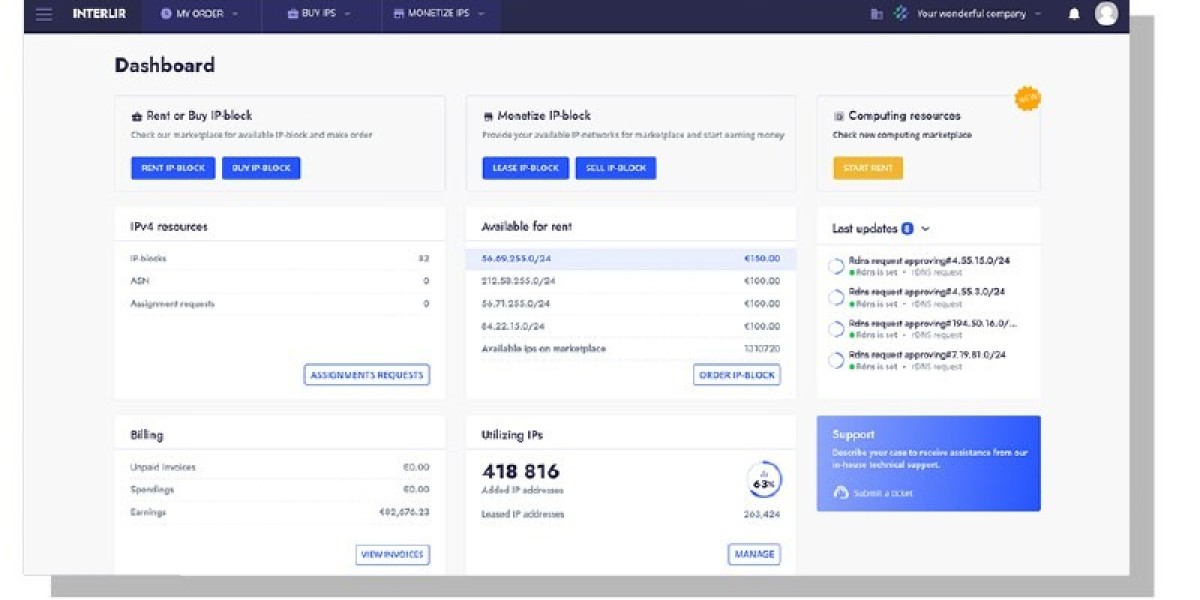The Battery Energy Storage Systems Industry is emerging as a cornerstone of the global clean energy transition. As renewable energy sources like solar and wind continue to expand, energy storage systems have become essential for ensuring reliability, flexibility, and grid stability. Battery Energy Storage Systems (BESS) are revolutionizing how energy is produced, distributed, and consumed — making power systems more efficient, resilient, and sustainable.
Understanding Battery Energy Storage Systems
Battery Energy Storage Systems are advanced technologies that store electrical energy for later use, enabling energy producers and consumers to balance supply and demand effectively. Unlike traditional storage methods such as pumped hydro, BESS offers rapid response, high scalability, and compact design, making it ideal for modern energy infrastructures.
These systems work by charging batteries when energy supply exceeds demand and discharging when energy is scarce or more expensive. This functionality supports grid balancing, peak shaving, frequency regulation, and renewable integration. BESS can be installed at various scales — from residential units to large utility-grade facilities — providing critical flexibility across the energy ecosystem.
Modern BESS solutions typically use lithium-ion batteries, but advancements in solid-state, flow, and sodium-ion technologies are expanding the range of applications. The integration of digital technologies such as IoT, AI, and energy management software has made these systems smarter and more efficient than ever before.
Market Overview and Growth Outlook
The global Battery Energy Storage Systems industry is witnessing exponential growth driven by rising renewable energy adoption, increasing electrification, and the push for decarbonization. Governments across the world are promoting clean energy investments, grid modernization, and emission reduction targets, all of which rely heavily on energy storage technology.
The growing penetration of renewable power sources such as solar and wind has created a need for efficient storage solutions to manage intermittency. As a result, BESS has become a key enabler of renewable integration, ensuring consistent and reliable power delivery.
North America, Europe, and Asia-Pacific currently lead the global market, with major investments in large-scale battery projects and microgrid applications. The United States, China, South Korea, Germany, and Japan are among the top contributors to technological innovation and deployment.
Market forecasts suggest that the demand for BESS will continue to accelerate due to declining battery costs, advancements in energy density, and supportive government policies promoting grid-scale storage systems.
Key Components of Battery Energy Storage Systems
A BESS typically consists of four core components working together to deliver stable energy storage performance:
1. Battery Cells:
The primary energy storage medium, made from lithium-ion, lead-acid, flow, or emerging chemistries.
2. Battery Management System (BMS):
Monitors temperature, voltage, and current to ensure safety and optimize performance.
3. Power Conversion System (PCS):
Converts DC electricity from batteries to AC for grid or load use, and vice versa.
4. Energy Management System (EMS):
Software that controls system operations, optimizes charge and discharge cycles, and manages integration with the grid or renewable sources.
Together, these components form an intelligent, adaptable system capable of stabilizing power networks and supporting renewable expansion.
Key Market Drivers
Several major factors are fueling the growth of the Battery Energy Storage Systems industry globally:
1. Increasing Renewable Energy Integration:
The variability of renewable sources such as wind and solar requires reliable energy storage to balance generation and consumption.
2. Falling Battery Costs:
Continuous technological advancements and economies of scale are driving down the cost of lithium-ion and other advanced batteries.
3. Grid Modernization Efforts:
Utilities are upgrading aging grid infrastructure with smart technologies that rely on BESS for load management and backup.
4. Electrification of Transport:
The rise of electric vehicles (EVs) is increasing the need for charging infrastructure and large-scale storage systems.
5. Government Policies and Incentives:
Supportive regulations, subsidies, and renewable energy mandates are encouraging the deployment of energy storage solutions.
6. Rising Energy Demand:
Population growth and industrialization are driving energy consumption, necessitating efficient energy management systems.
7. Need for Energy Security:
BESS enhances grid resilience against blackouts and energy supply disruptions.
These drivers collectively highlight why BESS is becoming an indispensable part of the global energy transformation.
Emerging Trends in the Industry
The Battery Energy Storage Systems industry is evolving rapidly with continuous innovation and diversification:
Hybrid Renewable-Storage Projects: Combining solar or wind farms with large-scale battery systems ensures 24/7 renewable power availability.
Second-Life Battery Applications: Repurposing used EV batteries for stationary storage enhances sustainability and reduces waste.
Advanced Battery Chemistries: Innovations like solid-state, zinc-air, and flow batteries promise higher energy density and longer life cycles.
AI and Predictive Analytics: Smart algorithms optimize system performance, predict failures, and enhance energy efficiency.
Virtual Power Plants (VPPs): Aggregating distributed BESS installations to create flexible, grid-connected energy resources.
Decentralized Energy Networks: Microgrids powered by BESS are improving energy access in remote and off-grid regions.
These trends are shaping a new era of intelligent, flexible, and decentralized power systems across the globe.
Challenges in the Battery Energy Storage Systems Industry
Despite strong growth potential, the industry faces several challenges:
High Initial Investment: While costs are decreasing, large-scale storage projects still require substantial capital.
Battery Degradation: Over time, battery capacity diminishes, impacting long-term performance and maintenance costs.
Recycling and Disposal: End-of-life battery management poses environmental and logistical challenges.
Safety Concerns: Risks of overheating and fire incidents demand rigorous safety protocols.
Regulatory Gaps: Standardized regulations for grid integration and safety vary across regions.
Addressing these challenges is key to achieving widespread adoption and long-term sustainability in the energy storage sector.
Regional Insights
North America:
The U.S. leads in utility-scale BESS installations, supported by renewable integration and grid modernization initiatives.
Europe:
Strong climate policies and renewable energy targets in countries like Germany, the UK, and France are boosting market demand.
Asia-Pacific:
China, South Korea, Japan, and India are rapidly expanding their BESS capacity to support growing renewable energy infrastructure.
Middle East & Africa:
BESS is being deployed in hybrid solar-diesel microgrids to enhance energy access and reduce fuel dependence.
Latin America:
Emerging markets such as Brazil and Chile are adopting storage systems to stabilize renewable power generation and support industrial operations.
Applications of Battery Energy Storage Systems
BESS is transforming how energy is used across sectors and applications:
Utility-Scale Power Plants: Enhancing grid stability, frequency regulation, and peak load management.
Commercial and Industrial: Lowering energy bills through demand charge management and backup power.
Residential: Enabling homeowners to store solar energy for nighttime use or power outages.
Renewable Integration: Balancing intermittent renewable sources for consistent energy delivery.
Transportation and EV Infrastructure: Supporting EV charging stations and fleet electrification.
Microgrids: Providing autonomous and reliable power supply in remote locations.
These applications demonstrate how BESS serves as a bridge between renewable generation and sustainable energy consumption.
Environmental and Economic Benefits
Battery Energy Storage Systems play a vital role in reducing greenhouse gas emissions and supporting the global shift toward carbon neutrality. By enabling renewable energy storage, BESS minimizes reliance on fossil fuels, enhances energy efficiency, and improves resource utilization.
Economically, these systems reduce operational costs, optimize power usage, and create opportunities for innovation in clean energy technologies. The growing BESS sector also supports job creation and industrial growth across the renewable value chain.
Frequently Asked Questions (FAQ)
1. What is a Battery Energy Storage System (BESS)?
BESS is a technology that stores electrical energy in batteries for later use, helping stabilize the power grid and integrate renewable energy sources.
2. Why is energy storage important?
It ensures consistent power supply, balances demand, and maximizes renewable energy utilization by storing excess energy.
3. Which batteries are most commonly used in BESS?
Lithium-ion batteries dominate the market, though flow and solid-state batteries are emerging as promising alternatives.
Conclusion
The Battery Energy Storage Systems industry is redefining the global energy landscape by enabling a smarter, cleaner, and more resilient power infrastructure. As renewable energy continues to expand, BESS will remain at the center of innovation — powering the transition to a sustainable future.
With continuous advancements in technology, policy support, and global collaboration, battery energy storage systems will play an indispensable role in achieving net-zero goals and building the foundation of tomorrow’s clean energy economy.
More Related Reports:
Distribution Substation Market
Dry Electrostatic Precipitator Market








